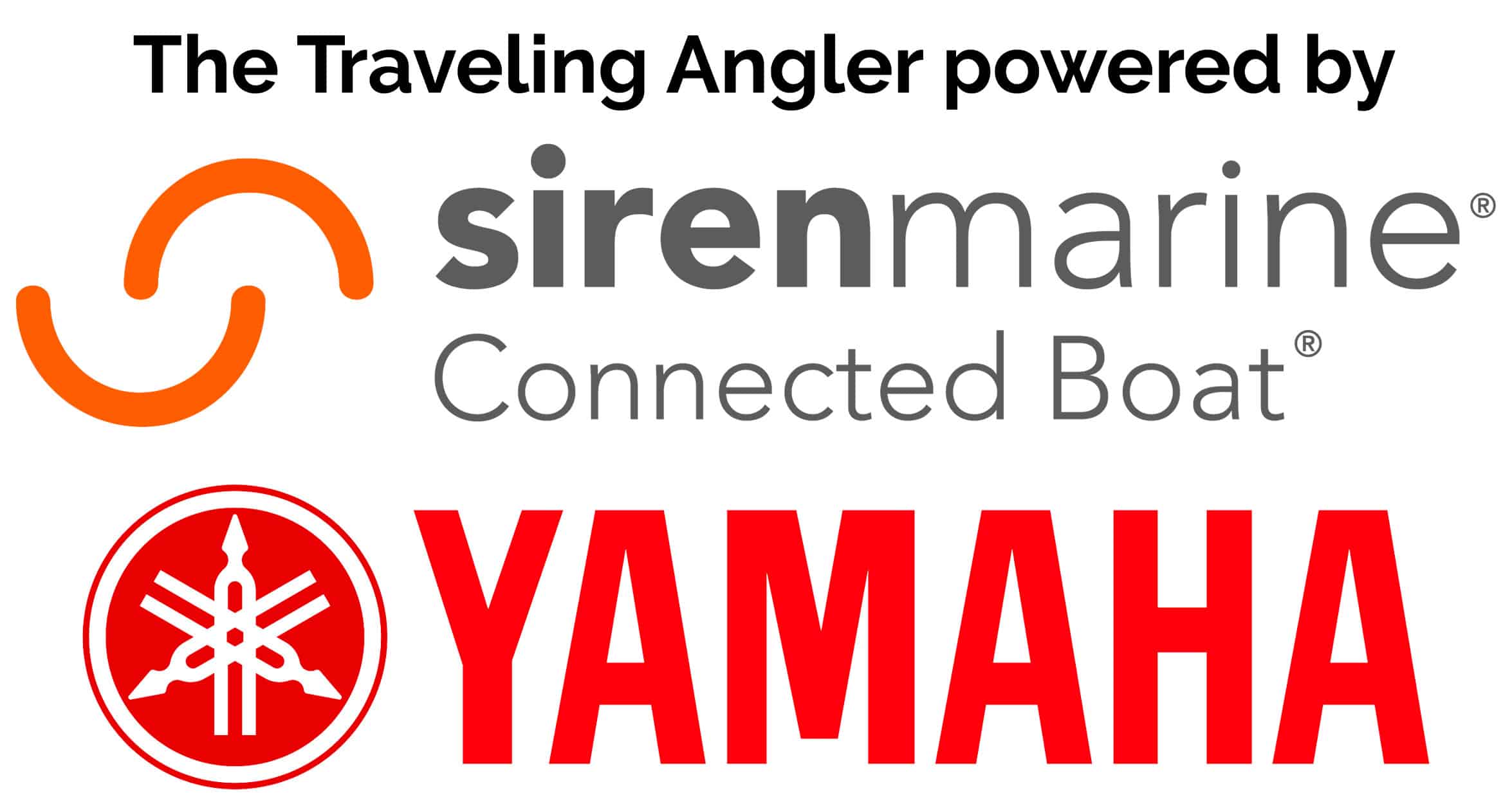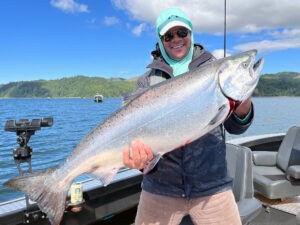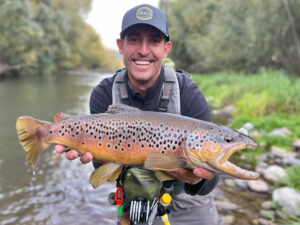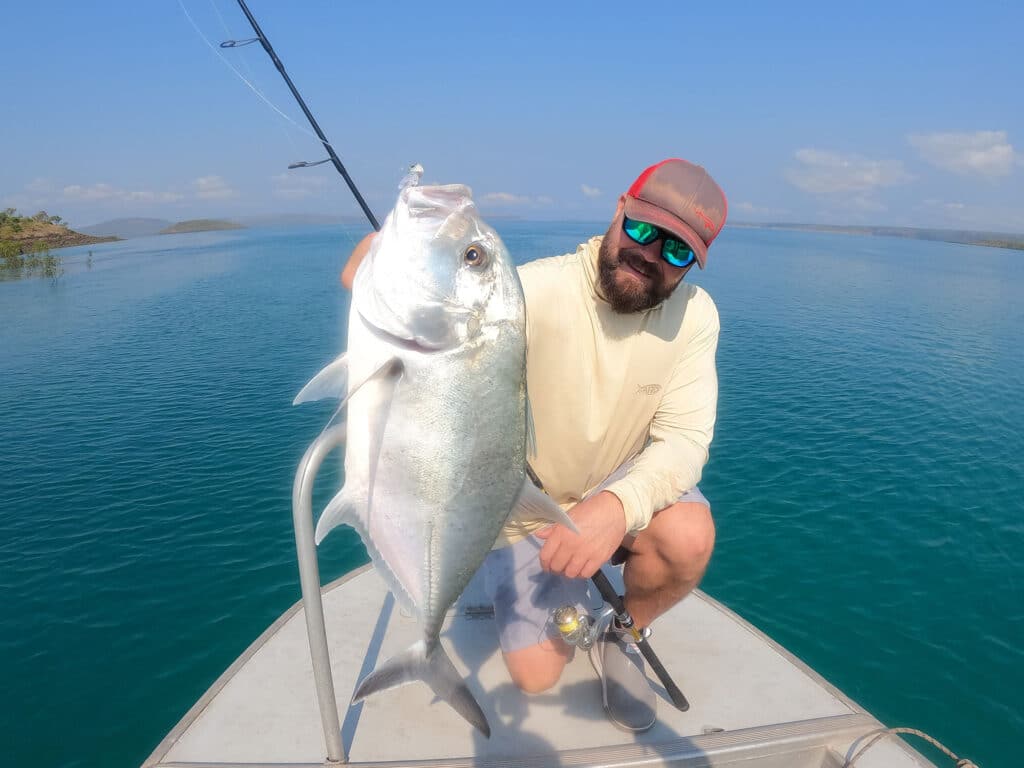
Sport-fishing enthusiasts will find few places in the world as unexplored as the mostly uninhabited, rugged coastal wilderness of Australia’s Kimberley. It’s a region so remote, it remains a mystery even to most Australians, few of whom have ever ventured to this distant northwestern corner of the continent.
The fishing remains unspoiled and untouched, and anglers who do manage to visit here marvel at the terrain, replete with dramatic gorges cut deeply into red sandstone cliffs, rugged ranges, waterfalls that tumble right into the Indian Ocean, and flats that daily become totally exposed and then hours later completely disappear when flooded by 25- to 30-foot tides that are part of this watery world.
The Kimberley includes many national parks, and ancient indigenous rock art can be found throughout the area on rock walls and in caves, estimated to date back as far as 40,000 years. The population of the Kimberley is roughly 50 percent aboriginal. Here’s a thumbnail look at four fishing destinations in the Kimberley.
Broome
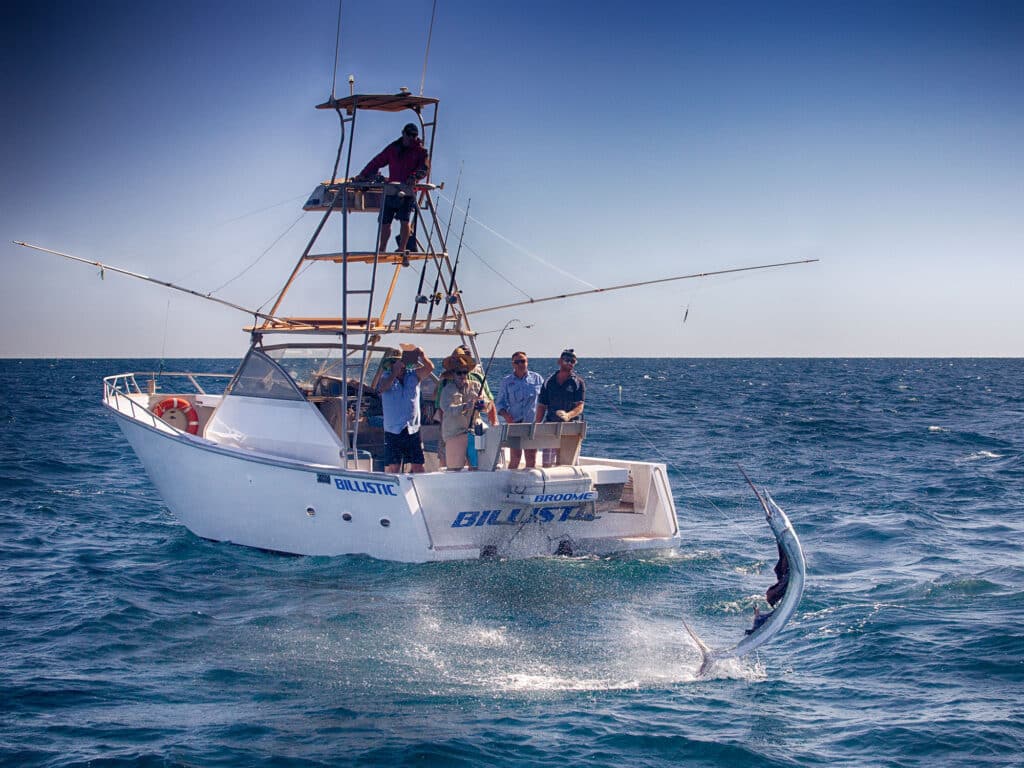
Broome might be considered a gateway to the Kimberley. The largest city in the territory (about 15,000 population), it’s located at the southern end of the Kimberley. Typically visitors to the Kimberley jump off from Broome or, to the northeast, Darwin.
But Broome is a fishing destination in its own right. It offers excellent surf-fishing without having to travel far, starting at Roebuck Bay along Crab Creek Road. Fish rocky points for the iconic barramundi, as well as trevally, queenfish, threadfin and mangrove jacks (as the Indo Pacific version of gray snapper are called). Charter boats will fish reefs nearshore for a great variety of gamefish, including various snappers, groupers (cod and coral trout), narrowbarred Spanish mackerel, longtail tuna, trevallies and more. Serious anglers can book a multi-day trip to the famed Rowley Shoals (about 200 miles out) for amazing fishing.
But more than any gamefish species, sailfish are quintessentially Broome. It’s not unreasonable to consider this one of the best fisheries for sails in the world, with doubles and triples common. Renowned Australian fishing journalist John Ashley has experienced the fishery, and he says it’s common for Broome boats to tag-and-release a dozen or more sails in a day. Boats typically run 15 to 40 miles to find sails (which they generally do by finding schools of baitfish). These Indian Ocean sails run 45 to 55 pounds or so—similar to Western Atlantic sailfish. And, similar to Florida, anglers generally fish light spinning gear, often pitch-baiting ballyhoo (aka garfish).
Rather than walking down a dock to meet their boat, charter anglers in Broome wade out to a dingy just off the beach, which will run them out to deeper water where boats are moored. There are no docks here on the extensive sandy shallows where huge tides are a constant fact of life.
Broome also offers heli-fishing (kashelicopters.com.au) on an extended half-day tour to drop anglers into otherwise inaccessible spots. It’s a pricey but a unique fishing experience, with barramundi the primary target. Information on the biggest offshore tournament here can be found by searching online for the Broome Billfish Classic.
Kuri Bay
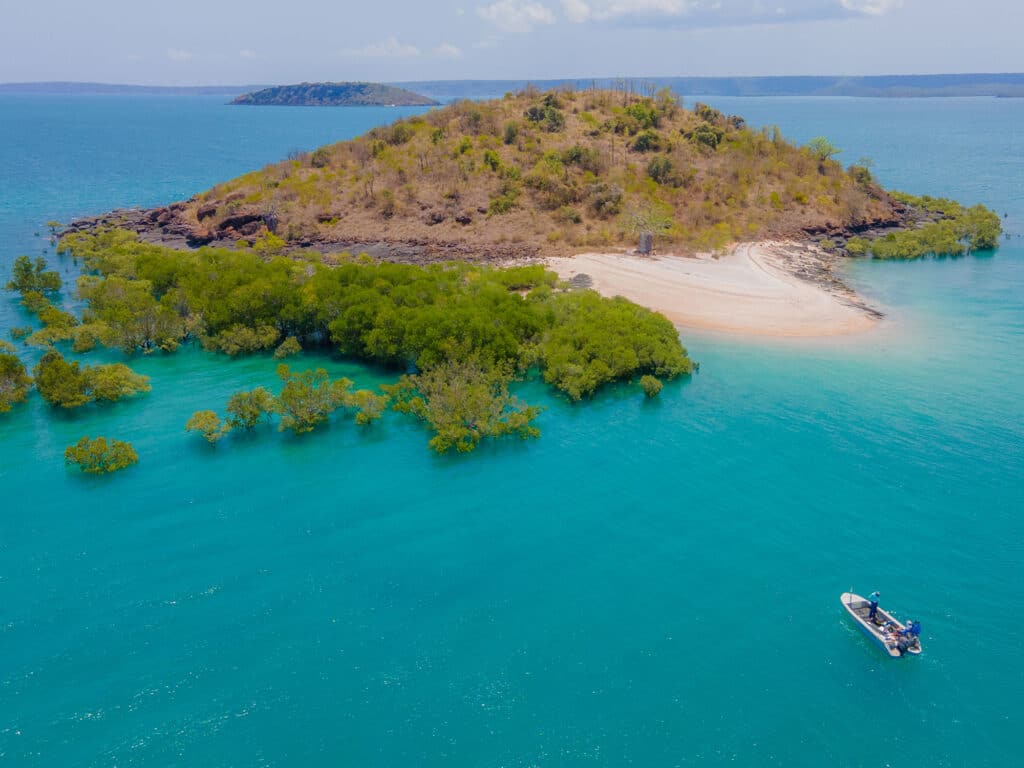
A bit over an hour north of Broome via floatplane, Kuri Bay sits deep in the Kimberley coast. For human purposes, it’s less a sport-fishing center than a base for the pearl industry. The Paspaley pearling center here was established in the 1950s, but only recently (in 2016) did the isolated spot become accessible to sport fishermen when well-known Kimberley guide and charter operator Peter Tucker worked out an arrangement with Paspaley to house small groups of anglers on-site at the working pearl farm, via his Kuri Bay Sportfishing Tours.
Often the Kimberley’s coastal waters are turbid, but at Kuri they’re generally clear. That makes it an appealing destination for fly-rodders, who have the chance to sight-cast to one of Australia’s most elusive inshore prizes, the blue bastard (actual name), a large (reaching at least 3 feet in length) species of sweetlips in the family of grunts, as spooky and unpredictable as any permit.
Fly- and light-tackle anglers alike fish for abundant trevallies (giant, golden, brassy and others), as well as barramundi, queenfish, mangrove jack, fingermark, cobia, longtail tuna, narrowbarred mackerel, various groupers and more.
As everywhere in the Kimberley, where and how one fishes always depends upon the massive tides. Some mornings, boats will remain briefly at the dock high and dry when low tide empties out Kuri Bay. The flip side means that when the tide floods the bay and the coast, it completely swallows shorter trees underwater. The guides at Kuri Bay, out of necessity, know how to play the tides and where to fish at any time.
Kimberley Coastal Camp
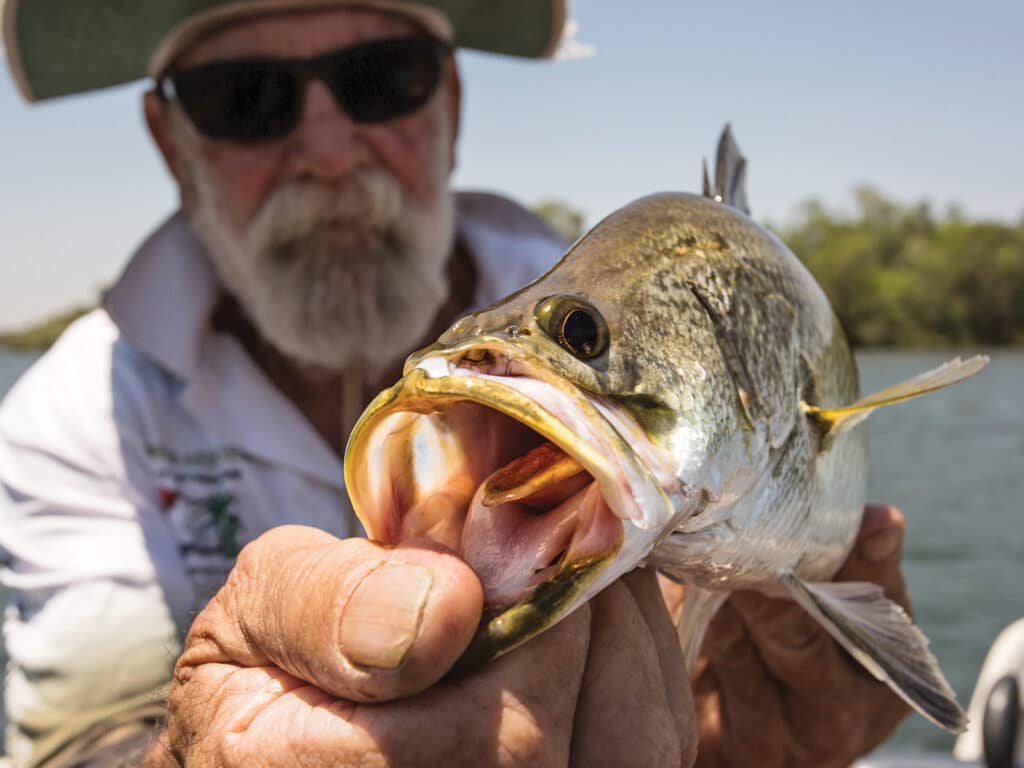
Other than this resort, there is simply nothing in this remote part of the Kimberley for many miles around. Visitors reach Kimberley Coastal Camp only by chopper or floatplane. The camp sits on the Admiralty Gulf north of the Mitchell Plateau and Lawley River National Park, northeast of Kuri Bay.
There’s abundant wildlife and ancient cave paintings (take a tour of indigenous rock-art sites), but fishing is the major draw. Barramundi are a primary target, but anglers catch the typical, wide variety of gamefish here including mulloway (aka black jewfish, a large croaker), threadfin salmon, mangrove jack, fingermark, giant trevally, narrowbarred Spanish mackerel, longfin tuna, queenies, coral trout, blue bone (blackchin tuskfish) and more. That diversity’s not too surprising with such a variety of habitats to fish at KCC: huge tidal rivers, mangrove-lined creeks, estuaries, flats and offshore reefs and islands. The resort claims that it’s “one of the few fishing tour operations that include tackle on an unconditional basis. No cost for loss or breakages.”
KCC owners Tub and Jules take pride in their cuisine, and in fact wrote a book about it — Cooking in Thongs, Recipes and Stories the Kimberley Coastal Way. The modest resort (16 guests maximum) is open year-round. For barramundi, in particular, the wet season is recommended, with February a peak month.
Kununurra
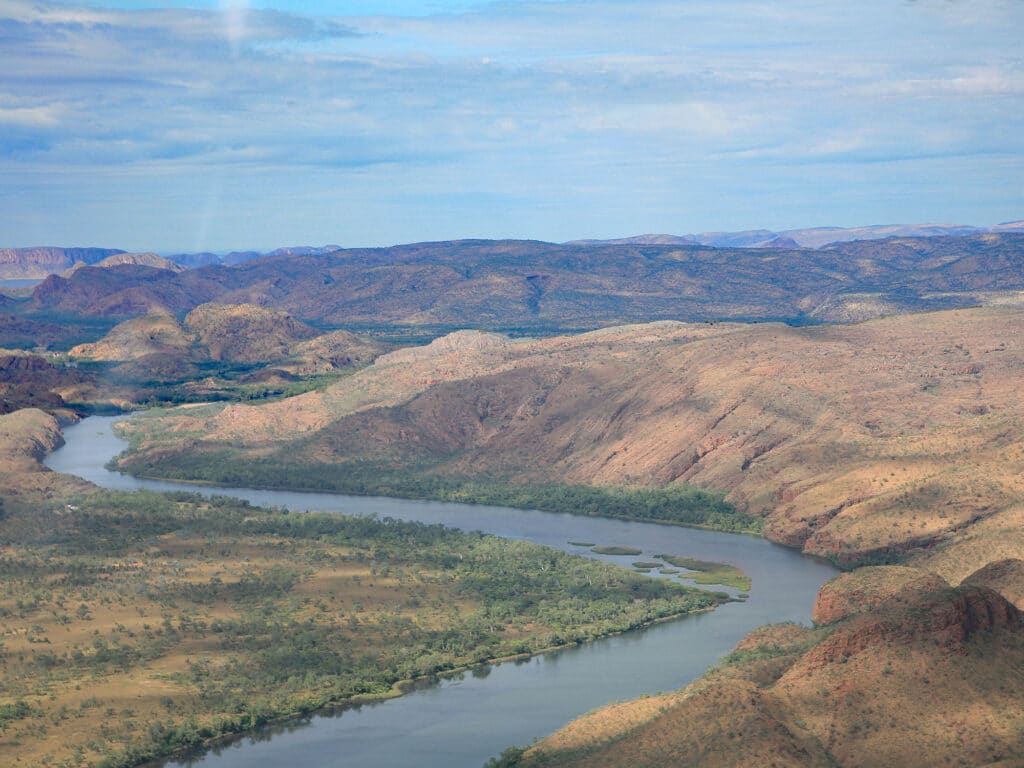
One needn’t venture far from this Kimberley community (population about 5,000) to find some outstanding barramundi fishing. Lake Kununurra, formed in 1963 with the construction of a dam across the mighty Ord River, has seen well more than a million barramundi fingerlings released over the past decade by the Lake Kununurra Barramundi Stocking Group. The result: a world-class fishery for Australia’s most iconic inshore gamefish.
The ragged coastline of the Cambridge Gulf and its estuaries just to the north of Kununurra also offer great barramundi fishing. The entire area along with the lake is included in the annual Apex Kununurra Barra Bash competition held each September. For information on that tournament, visit lakekununurrabarramundi.com.au.
Local fishing guides can be found at visitkununurra.com/tours/fishing-tours. For a very different sort of fishing experience, there’s barra fishing using hand lines with Pete’s Cultural Adventures. One spectacular site is famed Ivanhoe Crossing, a concrete causeway across the Ord River with water flowing over it—and plenty of big crocodiles (“salties”) hanging around.
Here too you’ll find heli-fishing opportunities. See helispirit.com.au. Kununurra’s airport is served by regular domestic flights, and the Great Northern Highway from Broome is paved for its length.
Helpful Links
For more information about fishing Western Australia, visit Tourism Western Australia (westernaustralia.com) and Great Fishing Adventures of Australia (part of australia.com). For general info about visiting Australia, see Tourism Australia. My thanks to these agencies, whose assistance made visiting the Kimberley possible. Also, be sure to check out the free digital magazine Allure for more Australian fishing adventures.

